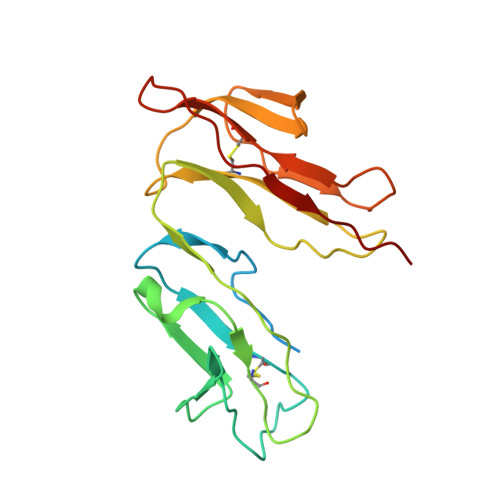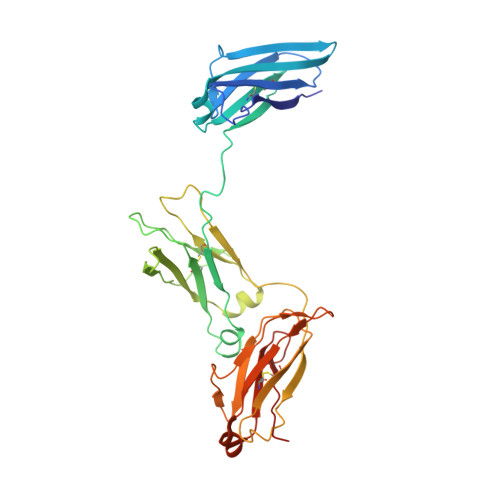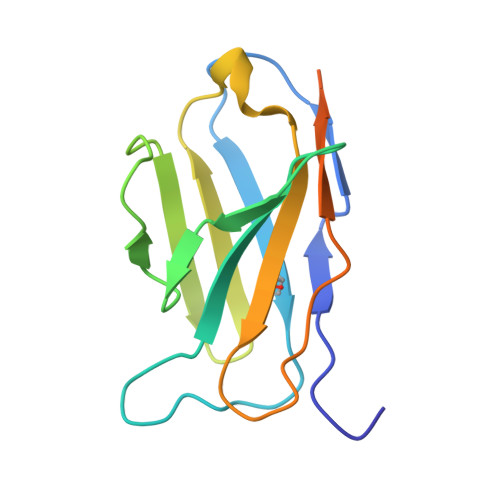Directed evolution of and structural insights into antibody-mediated disruption of a stable receptor-ligand complex.
Pennington, L.F., Gasser, P., Kleinboelting, S., Zhang, C., Skiniotis, G., Eggel, A., Jardetzky, T.S.(2021) Nat Commun 12: 7069-7069
- PubMed: 34862384
- DOI: https://doi.org/10.1038/s41467-021-27397-z
- Primary Citation of Related Structures:
7SHT, 7SHU, 7SHY, 7SHZ, 7SI0 - PubMed Abstract:
Antibody drugs exert therapeutic effects via a range of mechanisms, including competitive inhibition, allosteric modulation, and immune effector mechanisms. Facilitated dissociation is an additional mechanism where antibody-mediated "disruption" of stable high-affinity macromolecular complexes can potentially enhance therapeutic efficacy. However, this mechanism is not well understood or utilized therapeutically. Here, we investigate and engineer the weak disruptive activity of an existing therapeutic antibody, omalizumab, which targets IgE antibodies to block the allergic response. We develop a yeast display approach to select for and engineer antibody disruptive efficiency and generate potent omalizumab variants that dissociate receptor-bound IgE. We determine a low resolution cryo-EM structure of a transient disruption intermediate containing the IgE-Fc, its partially dissociated receptor and an antibody inhibitor. Our results provide a conceptual framework for engineering disruptive inhibitors for other targets, insights into the failure in clinical trials of the previous high affinity omalizumab HAE variant and anti-IgE antibodies that safely and rapidly disarm allergic effector cells.
- Department of Structural Biology, Stanford University School of Medicine, Stanford, CA, 94305, USA.
Organizational Affiliation:























